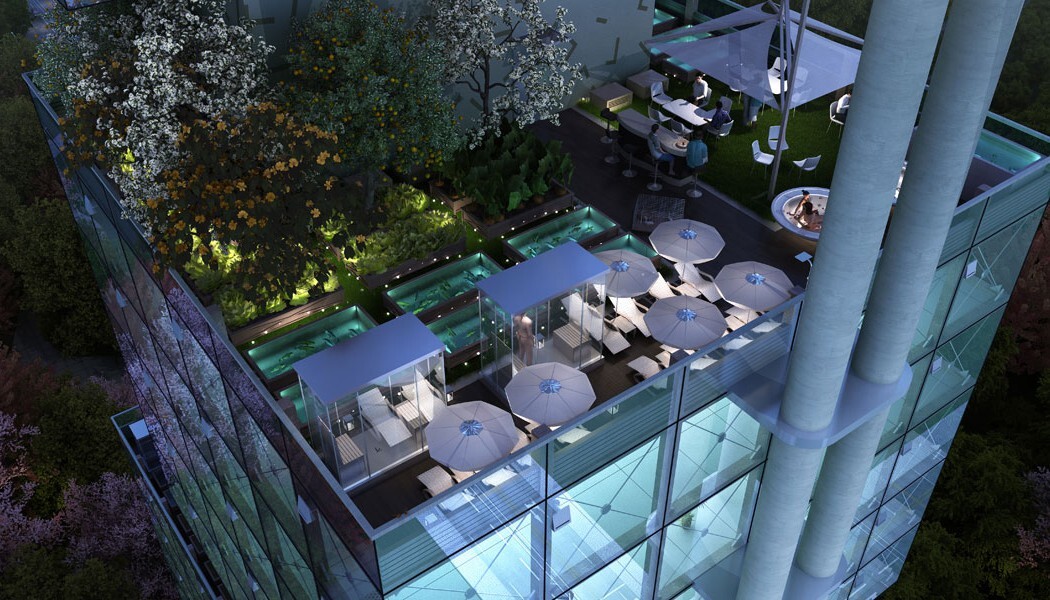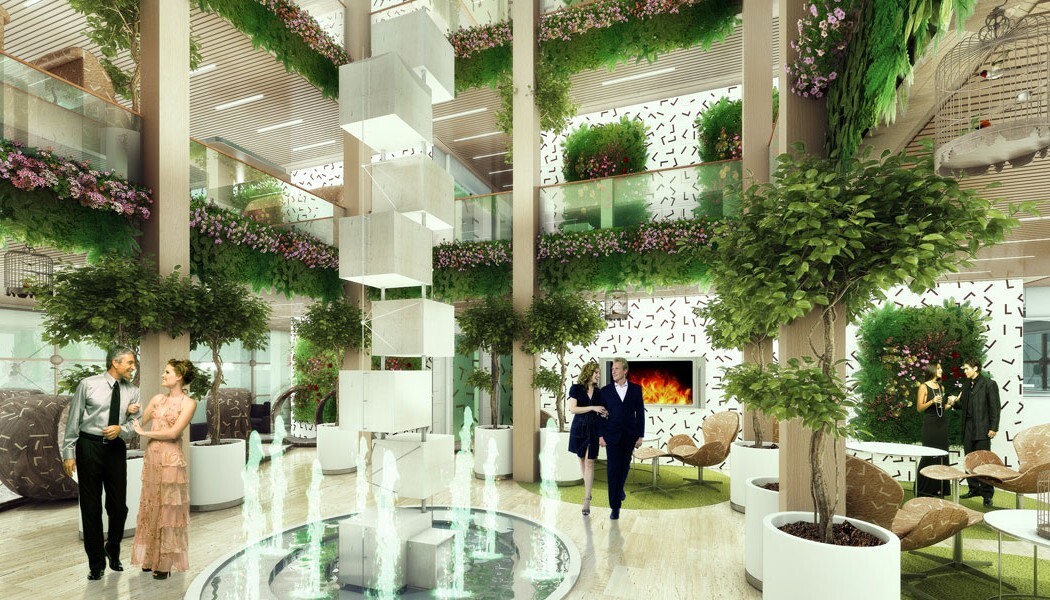Among the challenges that growing city populations face are climate change, social alienation, limited resources and urbanization. A new concept skyscraper is designed to tackle each of these issues. The Elastic Woodscraper II promises sustainability, efficiency and social cohesion.
Designed by Weingartner Architects, the Elastic Woodscraper II combines a busy mix of ideals into one building. Most notably, 70 percent of the proposed structure is made of wood. As Gizmag has previously noted, this can vastly reduce the impact of construction on the environment.
Elsewhere, as Aquaponic envisioned with its Homefarm concept, a strong community among those who live there is envisaged, with residents contributing to on-site urban farming. The concept also proposes the generation of its own solar and wind power, like the Pearl River Tower, and the use of sliding furniture in its apartments to make efficient use of space, similar to what Kitoko Studio and PKMN Architectures have previously employed.
The Elastic Woodscraper II concept has a central concrete core on which alternately offset "skycubes" are mounted. These are lifted into place using a crane. The core contains up to five elevators, stairs and risers for plumbing and power. It can also be built to contain a lobby and an underground car-park. An exterior frame is also employed.

Up to nine skycubes can be accommodated, each split into five floors and containing 15 apartments. The apartments are available with either 60 sq m (646 sq ft) or 95 sq m (1,023 sq ft) of space. Project architect Leonhard Weingartner tells Gizmag, however, that the usable space can be effectively tripled by installing six of Angelo Roventa's Elastic Living moving furniture units at a cost of around €40,000 (US$45,200).
Each apartment is said to benefit from floor-to-ceiling glazing that would provide impressive views. There's access to a rooftop terrace on top of the skycube in which it is housed, and the terraces will each feature an urban garden, a playground, a whirlpool and sauna, a sun deck and a barbecue area.
Another feature mooted for the building is a glass skin, the light transmission properties of which can be altered as required by applying a current to it, similar to that used by the Photon Space glass home. The use of this glass is aimed at reducing the cost of heating, air conditioning and lighting costs, as well as avoiding the need for light screens, blinds or curtains.

The design of the building features a combined heat and power station, a heat pump and a heat recovery ventilation system. Smart home features are installed so that building residents can ensure they are making efficient use of energy.
Weingartner Architects says the Elastic Woodscraper II design is available for developers to buy and that it plans to work with local architects to customize any eventual project to local tastes and requirements. Weingartner tells Gizmag that negotiations for a development in Switzerland are already underway.
A fully furnished core and skybox structure is priced at €4,431,000 ($5,029,000), with a three-level underground car-park costing an additional €10,078,000 ($11,437,000) and a fully furnished lobby costing an extra €5,425,000 ($6,157,000). All costs quoted are said to be 2015 pre-tax figures for construction in Germany, with costs elsewhere varying.
The video below provides an introduction to the Elastic Woodscraper II.
Sources: Weingartner Architects, Angelo Roventa











![The Ti EDC [everyday carry] Wrench is currently on Kickstarter](https://assets.newatlas.com/dims4/default/0ba225b/2147483647/strip/true/crop/4240x2827+0+3/resize/720x480!/quality/90/?url=http%3A%2F%2Fnewatlas-brightspot.s3.amazonaws.com%2F59%2Fb2%2F6a6fdd0348a8bfdad88bbcefec53%2Fdsc03572.jpeg)